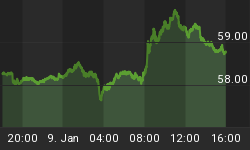Many investors say they do that by looking at the strong and weak Sectors and then playing them accordingly.
But, few investors take the next step and ask the following question: "Does one price level have a decided advantage over another price level?"
It sounds like a simple question, but it really isn't. What the question is really asking, is about whether it is the larger or smaller investor that is bullish at a given point in time.
Let me explain ... Imagine that you took a count at the close yesterday, of how many stocks reached a 1 month high and a 1 month low. Let's take that another step further and split the counts by how many stocks were above $10 and how many stocks were below $10.
If you ran the data last night, you would have had these counts:

Sometimes the counts like those above are a little harder to interpret, so we recalculated the above data in terms of the percentages for each group and came out with this chart:

Now, it becomes clearer what is going on ... The stocks above $10 were making New Highs by a factor of 62.9% versus 37.1%. The stocks below $10 were making New Lows 56.6% of the time.
So, the majority of the stocks above $10 were making new monthly highs, while the majority of the stocks below $10 were doing the opposite ... making new monthly lows.
The message here, is that the investing advantage is for stocks that are over $10 in value now, and there is a clear disadvantage to investing in stocks that are below $10 in value.
Since larger investors such a Institutional Investors, mutual funds, and hedge funds prefer the higher priced stocks, this suggests that the bigger players are more bullish than the smaller players are ... who focus on cheaper stocks.
If you are not currently one of our paid subscribers, why not give it some thought this weekend?















